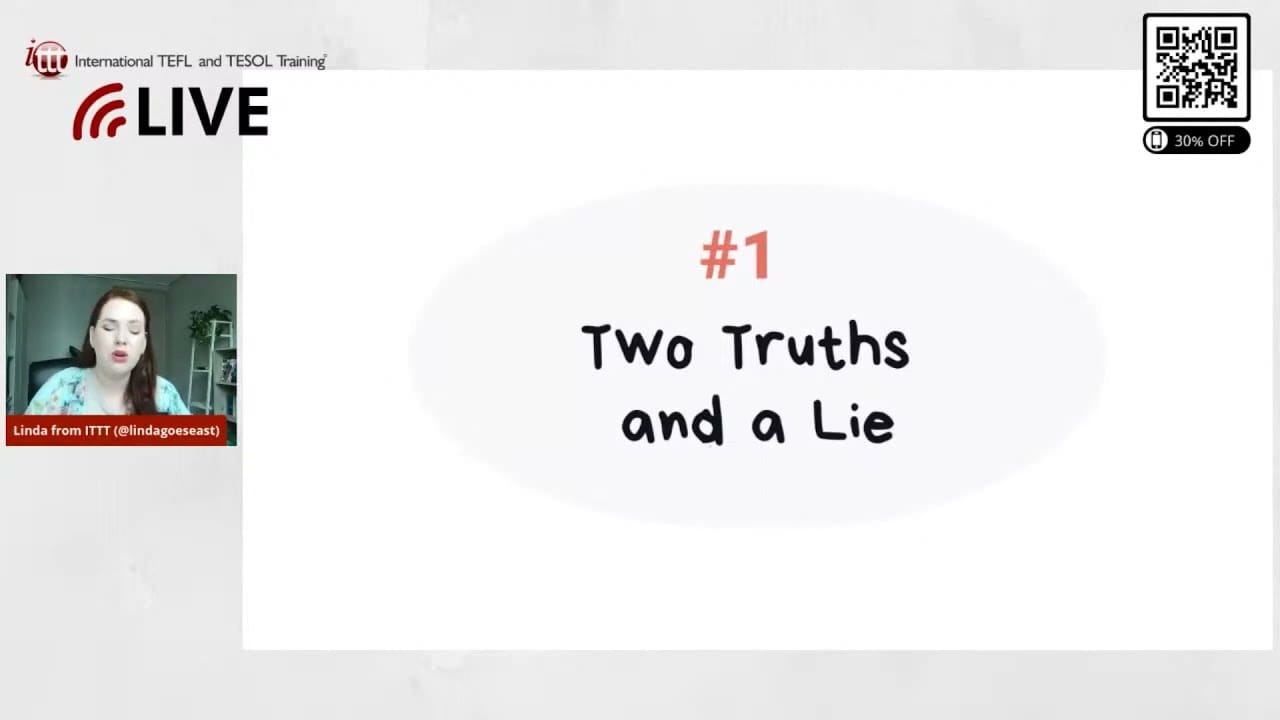5 Powerful Ice Breaker Games: Uncover the Truth in Two Truths and a Lie!
This is a great activity for your very first lesson with a new class. Basically, the students each write down three statements. Two …
source
Two Truths and a Lie: The Best EFL Ice Breaker Game
Ice breaker games are essential in English as a Foreign Language (EFL) classrooms, helping students ease into conversation and build rapport with one another. Among various options, "Two Truths and a Lie" stands out as a dynamic and engaging choice. In this article, we’ll explore how to effectively implement this game in your EFL classroom, its benefits, and some creative twists to keep the activity fresh and exciting.
What is "Two Truths and a Lie"?
"Two Truths and a Lie" is a social guessing game that encourages participants to share interesting facts about themselves while also engaging in critical thinking and listening skills. The premise is straightforward: each participant offers three statements about themselves—two of which are true, and one that is false. The other players must then guess which statement is the lie.
Example Statements:
- I have climbed a mountain.
- I can speak three languages.
- I have never eaten sushi.
In this example, the challenge for the other players is to figure out which statement is not true.
How to Play
Preparation: Depending on the size of the class, divide students into small groups or pairs. This encourages a more intimate setting where everyone can participate without feeling overwhelmed.
Instructions: Explain the rules clearly. Each participant will create three statements about themselves—two truths and one lie. Encourage students to think creatively and share lesser-known facts to make it more challenging.
Sharing: Allow each participant to present their statements. The other members of the group will discuss and guess which statement they believe is the lie.
Reveal: After everyone has made their guesses, the individual reveals which statement was the lie. This moment often leads to follow-up questions and discussions, further fostering conversation.
- Debrief: After the activity, conduct a brief debrief as a class, discussing what they learned about each other and the variety of truths and lies they encountered.
Benefits of "Two Truths and a Lie"
Encourages Communication: The game creates an informal atmosphere that encourages students to communicate in English. It reduces anxiety around speaking and makes it easier to engage.
Promotes Listening Skills: Participants must listen carefully to each other’s statements to successfully identify the lie, enhancing their listening comprehension.
Builds Community: Sharing personal anecdotes fosters a sense of community and trust, essential for effective collaboration in the classroom.
Cultural Exchange: This game provides insights into different cultural backgrounds, paving the way for richer understanding and appreciation among classmates.
- Language Practice: Students practice constructing sentences and building vocabulary while sharing personal information, reinforcing language learning in a contextualized manner.
Creative Twists
To keep the game fresh and engaging, consider introducing variations:
Theme-Based Statements: Choose a specific theme, such as travel, food, or hobbies. This can spark lively discussions and allows students to learn more about each other’s interests.
Group Play: Instead of individual turns, have students work in small groups, where they present group truths and lies. The larger group then guesses together.
Time Limit: Introduce a timer to limit how long participants have to guess, adding a fun and competitive element to the game.
- Written Statements: Let students write their statements on paper, which can then be anonymously guessed by the larger group. This anonymity might encourage bolder, more humorous statements.
Conclusion
"Two Truths and a Lie" is more than just a fun game; it is a powerful tool for teachers to break the ice and build community in the EFL classroom. By fostering communication, sharpening listening skills, and promoting cultural exchange, this game not only helps students to practice their English but also lays the foundation for a supportive learning environment. So, next time you need an icebreaker, give this game a try, and watch as your students connect in meaningful ways!















Post Comment